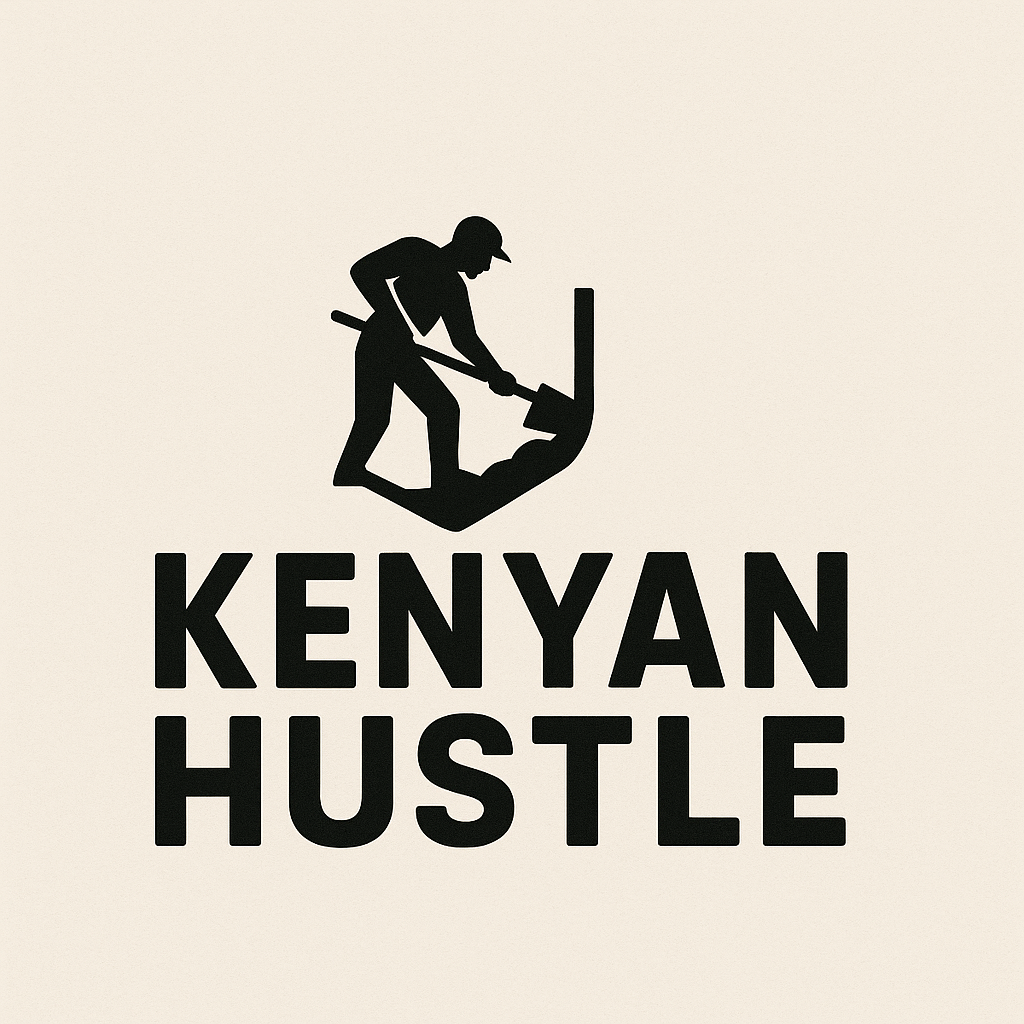Getting car loans in Kenya has never been easier, yet the process can feel overwhelming with so many options available. Whether you’re eyeing a brand-new Toyota or a reliable second-hand import, understanding your financing options is crucial.
This comprehensive guide walks you through everything from choosing the right lender to improving your credit score for better rates. You’ll discover practical strategies to save money, avoid common pitfalls, and drive away in your dream car sooner than you think.

Understanding Car Loans in Kenya
Car financing transforms vehicle ownership from a distant dream into achievable reality for thousands of Kenyans monthly. Knowing how the system works gives you significant advantages.
What Is a Car Loan?
A car loan provides money to purchase a vehicle, which you repay with interest over an agreed period. The car itself typically serves as collateral, meaning the lender can repossess it if you default on payments.
Most Kenyan lenders finance 70-90% of the vehicle’s value. You’ll need to provide the remaining amount as a down payment, usually between 10-30% of the purchase price.
Repayment periods range from 12 to 60 months. Longer terms mean lower monthly payments but higher total interest costs, while shorter terms increase monthly obligations but reduce overall expenses.
Current Car Loan Interest Rates in Kenya
The Central Bank Rate currently stands at 10.00%, a reduction aimed at making borrowing more affordable. However, actual car loan rates vary significantly between lenders.
Banks typically charge interest rates between 12% and 15% per annum, though your specific rate depends on your credit profile and the lender’s policies.
SACCOs offer more competitive rates ranging from 8% to 12% per annum, making them attractive alternatives for members seeking affordable financing.
Non-bank lenders and microfinance institutions charge higher rates. Asset financing companies typically charge between 14% and 20%, reflecting increased risk and faster approval processes.
How Car Financing Differs from Personal Loans in Kenya
Car loans use the vehicle as security, reducing lender risk. This collateral-backed approach typically results in lower interest rates compared to unsecured personal loans.
Approval processes focus heavily on your ability to repay. Lenders examine your income, employment stability, and credit history more thoroughly than with some other loan types.
Loan amounts directly correspond to vehicle value. Unlike personal loans where amounts may be arbitrary, car loans base limits on professional vehicle valuations.

Types of Car Loans Available in Kenya
Kenya’s diverse lending landscape offers multiple financing pathways, each with distinct advantages depending on your circumstances.
Bank Car Loans
Banks provide the most traditional car financing route. Major institutions like Equity Bank, Co-operative Bank, and NCBA Bank offer asset financing for both new and used cars.
Banks can finance up to 90% of the car’s value with repayment periods ranging from 12 months to 5 years. This flexibility accommodates different budgets and financial situations.
Documentation requirements are comprehensive. You’ll need your national ID, KRA PIN, six months’ bank statements, payslips for employed individuals, and business records for self-employed borrowers.
Processing times typically take 5-14 working days. Banks conduct thorough credit checks and vehicle valuations before approval, ensuring both parties understand the commitment.
Top Banks for Car Loans:
- KCB Bank – Offers up to 80% financing for used cars with repayment periods extending to 5 years and interest rates ranging from 13.5% to 15%
- NCBA Bank – Provides up to 90% financing for new and used cars with base lending rates starting from 12.5%
- Co-operative Bank – Offers car loans to both salaried and self-employed individuals with up to 80% financing and interest rates ranging from 14% to 16%
- Equity Bank – Specializes in asset financing with competitive terms for members
- National Bank of Kenya – Provides loans for new and used vehicles with negotiated repair financing
SACCO Car Loans
Savings and Credit Cooperative Organizations deliver member-focused financing with attractive terms. These member-owned institutions prioritize affordability over profit maximization.
SACCO interest rates range from 8% to 12% per annum with flexible repayment terms up to 6 years. Some SACCOs even offer zero deposit financing for long-standing members with good savings history.
Membership requirements form the main barrier. You must be an active SACCO member for at least six months with consistent savings contributions before qualifying for loans.
Popular SACCOs vary by profession and industry. Mwalimu National SACCO serves teachers, Stima SACCO caters to salaried professionals, and Unaitas SACCO finances both new and used cars.
Processing speeds often exceed banks. With established membership and savings history, approvals can occur within 3-7 days.

Dealer Financing
Car dealerships increasingly offer in-house financing through banking partnerships. This one-stop-shop approach simplifies purchasing by combining vehicle selection and financing.
Some dealers offer zero deposit car financing with interest rates ranging from 12% to 18% per annum. The convenience factor attracts buyers wanting immediate vehicle ownership.
Approval processes move faster than traditional banks. Many dealers provide same-day approvals, allowing you to drive away immediately after documentation.
Hidden costs sometimes lurk in dealer financing. Always compare total costs including processing fees, insurance markups, and actual interest rates against direct bank loans.
Key Dealer Financiers:
- Toyota Kenya – Partners with banks for brand-new Toyota financing with zero mileage
- Maridady Motors – Known for affordable second-hand car financing options
- Autochek Kenya – Specializes in flexible repayment plans for used cars
Asset Financing Companies
Specialized asset financiers provide alternative pathways outside traditional banking. These institutions focus exclusively on vehicle and equipment financing.
Asset financing companies can finance 100% of the car’s value with faster approval processes than traditional banks. This accessibility appeals to buyers who struggle meeting bank requirements.
Interest rates run higher between 14% and 20% compared to banks and SACCOs. The premium reflects increased risk tolerance and expedited processing.
Notable players include established names. Mogo Kenya provides financing for personal cars, matatus, and boda bodas, while Maisha Microfinance specializes in business vehicle loans.
Documentation requirements are less stringent. Many asset financiers approve loans based on income proof and basic documentation without extensive banking relationships.
Logbook Loans
Logbook loans allow vehicle owners to borrow against cars they already own. The lender holds your logbook as security while you continue using the vehicle.
Interest rates for logbook loans range from 15% to 30% per annum, significantly higher than purchase financing due to increased default risks.
You can borrow up to 80% of your car’s current market value. Professional valuations determine lending limits, with newer vehicles qualifying for higher amounts.
Repayment terms typically span 12-36 months. Shorter periods reflect the higher-risk nature of these loans and lenders’ desire for quick capital recovery.
Major Logbook Loan Providers:
- Platinum Credit – Fast logbook loan approvals with competitive rates
- Mwananchi Credit – Offers loans up to 80% of car value with up to 90% financing and flexible terms
- FinCredit Limited – Specializes in business logbook loans
- Mogo Kenya – Provides logbook loans alongside purchase financing

Import Financing
Specialized lenders help Kenyans finance vehicle imports from Japan, UK, and Singapore. This niche market serves buyers seeking specific models unavailable locally.
Import financing covers the purchase price plus import duties and clearing fees. Comprehensive coverage simplifies the complex importation process.
Interest rates run higher due to additional risks. Currency fluctuations, shipping delays, and customs complications justify premiums charged by import financiers.
Processing requires advance planning. Documentation, international transfers, and shipping timelines mean you’ll wait 6-12 weeks from application to vehicle delivery.
Comparison Table: Car Loan Types Overview
| Loan Type | Interest Rate | Financing | Repayment Period | Approval Time | Best For |
| Bank Loans | 12-15% | Up to 90% | 12-60 months | 5-14 days | Stable income earners |
| SACCO Loans | 8-12% | Up to 100% | 12-72 months | 3-7 days | SACCO members |
| Dealer Financing | 12-18% | 80-100% | 12-60 months | Same day | Quick approvals |
| Asset Financing | 14-20% | Up to 100% | 12-60 months | 2-5 days | Self-employed |
| Logbook Loans | 15-30% | Up to 80% | 12-36 months | 24 hours | Emergency funding |
| Import Financing | 15-25% | 70-90% | 24-60 months | 10-20 days | Import buyers |
Qualifying for Car Loans in Kenya
Meeting eligibility requirements dramatically improves approval chances and secures better interest rates. Understanding what lenders seek helps you prepare properly.
Basic Eligibility Requirements
You must be 18 years or older with a stable source of income to qualify for most car loans. Age limits typically cap at 65-70 years depending on the lender.
Valid identification remains mandatory. You’ll need a valid Kenyan ID or passport along with a KRA PIN for tax compliance verification.
Income documentation forms the approval backbone. Employed individuals must provide payslips while self-employed borrowers need business records demonstrating consistent income.
Six months of bank statements are standard requirements across most lenders. These statements reveal income patterns, spending habits, and financial stability.
Understanding CRB and Credit Scores
Credit Reference Bureaus track your borrowing and repayment behavior, with Kenya having three licensed CRBs: Metropol, Creditinfo, and TransUnion, all regulated by the Central Bank of Kenya.
Credit scores range from 200 to 900 points, with scores below 400 indicating poor credit history. Lenders view these scores as critical indicators of repayment likelihood.
Maintaining a credit score above 650 significantly increases your chances of loan approval. Higher scores also unlock better interest rates and terms.
CRB clearance is mandatory for most lenders. Negative listings from defaulted loans can block approvals until you clear outstanding debts.

Required Documentation Checklist
For Employed Individuals:
- National ID and KRA PIN certificate
- Recent payslips (last 3-6 months)
- Six months’ bank statements
- Employment contract or confirmation letter
- CRB clearance certificate
For Self-Employed Borrowers:
- National ID and KRA PIN certificate
- Business registration documents
- Six months’ business bank statements
- Tax returns or revenue authority compliance certificate
- Business premises photos or lease agreement
- CRB clearance certificate
Additional Documents:
- Comprehensive insurance quotation for the vehicle
- Proforma invoice or vehicle details
- Down payment proof (bank statements or MPESA statements)
- Two recent passport photos
- Utility bill showing residence
How Employment Status Affects Approval
Salaried employees enjoy easier approvals. Predictable income streams reduce lender risk, often resulting in higher loan amounts and better rates.
Self-employed individuals face stricter scrutiny. Inconsistent cash flows concern lenders, requiring additional documentation proving business stability and profitability.
Contract workers need employment confirmation letters. Fixed-term contracts must extend beyond the loan repayment period to satisfy lender requirements.
Business owners should demonstrate longevity. Companies operational for over three years with audited accounts secure better terms than new ventures.
Income-to-Loan Ratio Calculations
Lenders use debt-to-income ratios determining affordability. Most institutions cap total monthly debt obligations at 40-50% of gross monthly income.
Calculate your ratio before applying. Add all monthly debt payments (existing loans, rent, utilities) and divide by gross monthly income.
Example calculation: If you earn KES 100,000 monthly with existing debts of KES 30,000, your ratio sits at 30%. You could potentially handle additional KES 10,000-20,000 in car loan payments.
Lower ratios strengthen applications. Paying off smaller debts before applying improves your financial profile and increases approval likelihood.

Step-by-Step Car Loan Application Process in Kenya
Understanding the application journey removes anxiety and helps you prepare adequately for each stage.
Researching and Comparing Lenders
Start by identifying your financing needs. Determine your budget, preferred vehicle, and comfortable monthly payment before approaching lenders.
Compare interest rates across multiple institutions. A 2-3% rate difference translates to tens of thousands of shillings over the loan lifetime.
Read terms and conditions carefully. Hidden fees, early repayment penalties, and insurance requirements significantly impact total costs.
Check online reviews and testimonials. Other borrowers’ experiences reveal service quality, processing speeds, and potential issues with specific lenders.
Preparing Your Application
Gather all required documents in advance. Complete documentation accelerates processing and demonstrates organizational skills to lenders.
Check your CRB status before applying, as you can obtain your credit score for KES 150 and a detailed credit report for KES 250 from licensed CRBs.
Calculate realistic loan amounts. Factor in down payment, monthly income, existing obligations, and emergency fund maintenance when determining borrowing limits.
Identify your preferred vehicle. Having specific car details including make, model, year, and estimated price streamlines lender evaluations.
The Application Submission Process
Submit applications to 2-3 lenders simultaneously. Multiple applications increase approval chances without significantly impacting your credit score if done within a short timeframe.
Complete application forms accurately. Errors or inconsistencies trigger additional verification, delaying approvals and raising red flags.
Follow up regularly without being pushy. Polite check-ins demonstrate enthusiasm while keeping your application top-of-mind for loan officers.
Be prepared for clarification requests. Lenders often seek additional information during evaluation, so respond promptly to maintain momentum.
Approval Timeline Expectations
Bank loans typically require 5-14 working days. Thorough credit checks, vehicle valuations, and committee approvals extend timelines compared to other lenders.
SACCO approvals move faster at 3-7 days for members with good standing. Established relationships and savings history accelerate decision-making.
Asset financing companies process applications in 2-5 days. Their specialized focus and streamlined systems enable quicker turnarounds.
Dealer financing offers same-day approvals for qualified buyers. Pre-approved financing arrangements allow immediate vehicle releases.
What Happens After Approval
Review the loan offer carefully. Confirm interest rates, repayment schedules, insurance requirements, and any additional fees before signing.
Negotiate where possible. Interest rates, processing fees, and insurance costs sometimes have wiggle room, especially with strong credit profiles.
Sign the loan agreement and vehicle purchase agreement. Legal documentation binds both parties to agreed terms and protections.
Complete insurance arrangements. Comprehensive coverage protecting the lender’s interest is mandatory before fund disbursement.
Receive funds and collect your vehicle. Lenders typically pay dealers directly, with documentation transfers finalizing ownership.

Improving Your Chances of Approval
Strategic preparation significantly increases approval odds and secures more favorable terms.
Building a Strong Credit History
Maintain a good credit score by avoiding CRB blacklisting through timely loan repayments. Payment history forms the largest component of credit scores.
Start with smaller loans if you lack credit history. Successfully repaying personal loans, mobile loans, or credit cards builds positive credit records.
Avoid multiple loan applications within short periods. According to Consumer Financial Protection Bureau research, excessive applications signal financial distress to lenders.
Monitor your credit report regularly to identify and dispute errors promptly. Inaccurate negative listings damage scores unfairly.
Increasing Your Down Payment
Larger down payments reduce lender risk. While some lenders require 10% to 30% down payment, exceeding minimums strengthens applications dramatically.
Higher equity improves loan terms. Borrowing less relative to vehicle value often unlocks better interest rates and faster approvals.
Save systematically toward your goal. Set up automatic transfers to dedicated savings accounts, treating down payment savings as non-negotiable monthly expenses.
Consider selling assets or using bonuses. Liquidating unused items or allocating windfalls accelerates down payment accumulation without affecting monthly budgets.
Demonstrating Income Stability
Employment longevity reassures lenders. Workers with 2-3 years at current employers demonstrate stability valued in credit assessments.
Supplementary income sources strengthen applications. Freelance work, rental income, or investment returns diversify cash flows, reducing repayment risk.
Maintain organized financial records. Well-documented income through proper invoicing and banking demonstrates professionalism that impresses loan officers.
Avoid job changes during application processes. Career transitions raise stability concerns, potentially delaying approvals until new employment establishes.
Clearing Existing Debts
Reduce your debt-to-income ratio strategically. Paying off high-interest loans or credit cards before applying improves your financial profile significantly.
If you clear loans, it takes financial institutions up to three working days to update CRBs, with CRBs requiring another two to three working days to update loan status.
Consolidate multiple small debts. Combining several obligations into single payments simplifies finances and may reduce total monthly obligations.
Negotiate with existing creditors. Payment plans for past defaults can clear negative CRB listings, reopening financing opportunities.
Working with Guarantors
Some lenders accept guarantors for borderline applications. Guarantors with strong credit profiles and stable income reduce perceived risk.
Choose guarantors carefully. They assume full repayment responsibility if you default, potentially damaging relationships and their credit.
SACCOs particularly value guarantor arrangements. Member guarantees leverage community accountability, facilitating approvals for newer members.
Formal guarantor agreements protect all parties. Written terms clarifying obligations prevent misunderstandings if repayment difficulties arise.

Smart Strategies to Reduce Car Loan Costs in Kenya
Minimizing financing expenses frees resources for other priorities while building wealth faster.
Negotiating Better Interest Rates
Your credit score provides negotiating leverage. Excellent credit justifies requesting rates below advertised ranges, potentially saving thousands.
Compare competing offers explicitly. Telling lenders about better terms elsewhere often triggers matching or improvement to secure your business.
Leverage existing banking relationships. Long-term customers with good account histories frequently receive preferential rates as retention incentives.
Consider relationship bundling. Opening savings accounts, salary domiciliation, or purchasing other products sometimes unlocks rate discounts.
Choosing Optimal Loan Terms
Shorter repayment periods reduce total interest paid despite higher monthly payments. A 36-month loan costs significantly less than 60 months at identical rates.
Balance monthly affordability against total costs. Stretching to barely affordable short-term payments risks default, while excessively long terms waste money on interest.
Calculate break-even points between term options. Online loan calculators reveal total costs across different periods, enabling informed decisions.
Consider balloon payment structures carefully. Lower monthly payments with large final payments suit specific situations but carry refinancing risks.
Making Extra Payments
Making extra repayments whenever possible significantly reduces interest paid, with even small additional payments going a long way. Principal reductions compound savings over loan lifetimes.
Target principal rather than interest. Clarify with lenders that additional payments reduce principal balances rather than prepaying scheduled interest.
Time extra payments strategically. Early loan-life payments generate maximum impact since interest calculations base on outstanding principal.
Use windfalls wisely. Bonuses, tax refunds, or unexpected income directed toward loans accelerate payoff without affecting monthly budgets.
Avoid early repayment penalties. Some lenders charge fees for premature loan settlement, potentially negating savings from extra payments.
Refinancing Opportunities
Monitor interest rate trends continuously. Falling rates or improved personal credit create refinancing opportunities reducing costs.
Refinancing makes sense when rate reductions exceed 2-3%. Smaller improvements may not justify processing fees and administrative effort.
Timing matters significantly. Refinance early in loan terms to maximize savings, as later refinancing provides diminishing returns.
Consider balance transfers to better lenders. Moving loans to institutions offering superior terms, even with fees, can save substantially over remaining periods.
Total Cost of Ownership Calculations
Look beyond monthly payments to true costs. Insurance premiums, fuel consumption, maintenance, and registration fees dramatically impact affordability.
Calculate all-in monthly expenses before committing. Vehicle-related costs shouldn’t exceed 20-25% of take-home income for sustainable ownership.
Factor in depreciation losses. New cars lose 20-30% in year one, effectively costing more than purchase prices suggest.
Consider opportunity costs. Money locked in car payments could otherwise generate investment returns or emergency fund security.

Common Mistakes to Avoid When Taking Car Loans in Kenya
Learning from others’ errors prevents costly mistakes and protects your financial health.
Borrowing More Than You Can Afford
Overextending financially ranks as the top car loan mistake. Loan approval depends on your repayment ability, so choose a car within your budget rather than maximum approved amounts.
The 20/4/10 rule provides guidance. Put 20% down, finance for no longer than four years, and keep total vehicle expenses under 10% of gross income.
Remember hidden costs multiply. Fuel, insurance, maintenance, parking, and repairs add 30-50% to monthly payment costs.
Test affordability before applying. Live on your expected post-loan budget for 2-3 months, ensuring comfort with reduced discretionary spending.
Ignoring Total Interest Costs
Focus on total repayable amounts, not just monthly payments. A KES 1 million loan at 15% over five years costs KES 1,424,000 total.
Interest differences compound dramatically. A 3% rate reduction on that same loan saves over KES 100,000 across the term.
Use online calculators comparing scenarios. Visual representations of total costs aid understanding better than theoretical interest rate percentages.
Consider interest as opportunity cost. Money paid in interest could alternatively build emergency funds or investment portfolios.
Skipping Insurance Comparison
Lenders require comprehensive insurance, but you choose providers. Premiums vary 20-40% between insurers for identical coverage.
Don’t default to lender-recommended insurers. They may receive commissions, meaning their suggestions serve profits over your savings.
Annual reviews maintain competitiveness. Insurance loyalty rarely benefits customers, with shopping around annually securing better rates.
Balance price against service quality. The cheapest insurer may delay claims or dispute coverage, creating headaches during accidents.
Failing to Read the Fine Print
Loan agreements contain critical details buried in dense legal language. Processing fees, prepayment penalties, and insurance markups hide in small print.
Late payment penalties vary widely. Some lenders charge flat fees while others apply percentage-based penalties that accumulate quickly.
Repossession terms deserve close attention. Understanding triggers and procedures protects you during financial difficulties.
Have financial advisors review contracts. Professional eyes catch problematic clauses you might miss despite careful reading.
Taking Logbook Loans for Non-Emergencies
Logbook loans’ high interest rates suit genuine emergencies only. Using them for vacations or discretionary purchases wastes money on expensive financing.
Default risks your vehicle. Losing your car impacts employment and daily life more severely than missing non-essential purchases.
Explore alternatives first. Personal loans, savings withdrawals, or even credit cards often cost less than logbook financing.
Create emergency funds preventing logbook loan needs. Three to six months’ expenses in accessible savings eliminates most emergency borrowing requirements.

Managing Your Car Loan Successfully
Responsible loan management protects your credit, reduces costs, and ensures smooth vehicle ownership.
Setting Up Automatic Payments
Automation eliminates missed payments. Standing orders or direct debits ensure timely payments without manual intervention each month.
Choose payment dates strategically. Schedule deductions shortly after salary payments when account balances are highest.
Maintain buffer amounts above payment requirements. Unexpected expenses sometimes drain accounts, so padding prevents bounced payments.
Monitor automatic payments regularly. Bank errors or changed account numbers sometimes disrupt automation, requiring manual catch-ups.
Tracking Your Loan Balance
Regular balance checks motivate continued repayment. Watching principal decrease provides psychological encouragement during long repayment journeys.
Request amortization schedules from lenders. These detailed breakdowns show exactly how each payment splits between principal and interest.
Celebrate milestones along the way. Reaching halfway points or paying off specific amounts reinforces positive financial behaviors.
Use mobile apps tracking multiple debts. Consolidated views of all obligations help prioritize payments and identify overpayment opportunities.
What to Do If You Miss a Payment
Contact your lender immediately. Proactive communication demonstrates good faith and may enable grace periods or payment plan adjustments.
Financial institutions must provide 30-day notice before submitting negative listings to CRBs. This window allows catching up before credit damage.
Understand your lender’s policies. Some institutions offer one-time courtesy extensions for previously reliable borrowers facing temporary difficulties.
Catch up quickly to minimize damage. Single late payments cause less harm than extended delinquency patterns.
Dealing with Financial Hardship
Job loss or income reduction requires immediate lender communication. Most institutions prefer restructuring over default and repossession.
Request loan restructuring during hardships. Extended terms, temporary reduced payments, or payment holidays help navigate difficulties.
Prioritize secured debt over unsecured. Car loans risk repossession, so maintain vehicle payments even if delaying other obligations.
Explore selling the vehicle privately. Voluntary sales typically recover more value than repossessions, potentially clearing loans completely.
Building Equity in Your Vehicle
Understand equity as current value minus outstanding loan. Positive equity provides financial flexibility during emergencies or upgrade desires.
Make extra principal payments building equity faster. Even KES 5,000 monthly additions significantly accelerate equity accumulation.
Maintain your vehicle meticulously. Regular servicing, cleanliness, and prompt repairs preserve value better than neglect.
Avoid modifications reducing resale value. Custom paint, extreme modifications, or removing original equipment often decreases rather than increases worth.

Frequently Asked Questions
What credit score do I need to qualify for a car loan in Kenya?
Most lenders prefer credit scores above 650 for car loan approvals, though requirements vary by institution. Scores below 400 indicate poor credit and significantly reduce approval chances.
Some asset financing companies and SACCOs may approve lower scores with higher down payments or guarantors, but expect higher interest rates. If your score is low, focus on clearing existing debts and building positive credit history before applying.
Can I get a car loan if I’m self-employed?
Yes, self-employed individuals can qualify for car loans, though documentation requirements are more extensive. You’ll need business registration documents, six months of business bank statements, tax compliance certificates, and proof of consistent income.
Asset financing companies and SACCOs often prove more flexible than traditional banks for self-employed applicants. Your business should ideally be operational for at least two years with demonstrable profitability.
How much should I save for a down payment?
Most lenders require between 10% to 30% down payment on the vehicle’s value. Larger down payments improve approval chances and reduce interest costs. For a KES 1 million car, prepare KES 100,000-300,000 as minimum down payment.
Some SACCOs offer zero-deposit financing for long-standing members, while dealer financing occasionally provides no-deposit options at higher interest rates.
What happens if I can’t make my car loan payments?
Missing payments triggers several consequences. Lenders must provide 30-day notice before reporting negative listings to credit bureaus, giving you time to catch up or arrange payment plans.
Contact your lender immediately when facing difficulties – many offer temporary relief through restructuring or payment holidays. Continued default leads to vehicle repossession, credit score damage, and potential legal action for balance deficiencies.
Should I choose a shorter or longer loan term?
Shorter terms (24-36 months) cost less in total interest but require higher monthly payments. Longer terms (48-60 months) offer lower monthly payments but significantly increase total interest costs.
Choose based on your financial stability – if you can comfortably afford higher payments, shorter terms save money. If budgets are tight, longer terms provide breathing room, though you’ll pay more over the loan’s lifetime.
Can I pay off my car loan early without penalties?
Most Kenyan lenders allow early repayment, though policies vary. Banks and SACCOs typically don’t charge prepayment penalties, while some microfinance institutions may. Always confirm prepayment terms before signing loan agreements.
Even with small penalties, early payoff usually saves money through reduced interest. Request updated payoff amounts directly from lenders to ensure accuracy.
How do logbook loans differ from regular car loans?
Logbook loans are secured against cars you already own, while regular car loans finance vehicle purchases. Logbook loans charge higher interest rates (15-30% annually) and offer shorter terms (12-36 months).
You retain vehicle use during repayment, but the lender holds your logbook. Logbook loans suit emergency funding needs but cost more than purchase financing, so reserve them for genuine emergencies.
What insurance is required for car loans?
Comprehensive insurance is mandatory for financed vehicles. This coverage protects both your interests and the lender’s collateral. Minimum requirements typically include third-party liability, fire, and theft coverage.
Annual premiums average 3-5% of vehicle value, though rates vary by insurer, driver age, and coverage specifics. Shop around for competitive rates – savings can reach 20-40% between the most and least expensive providers.


Leave a Reply